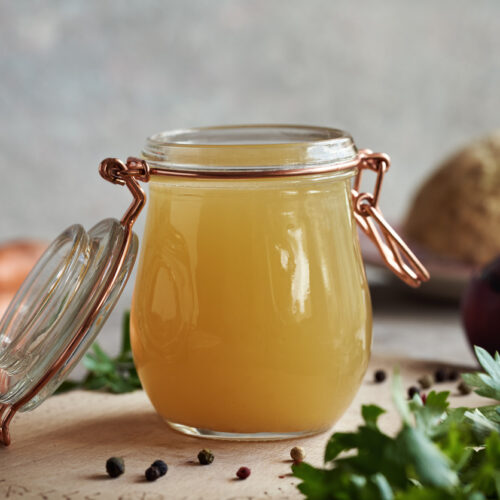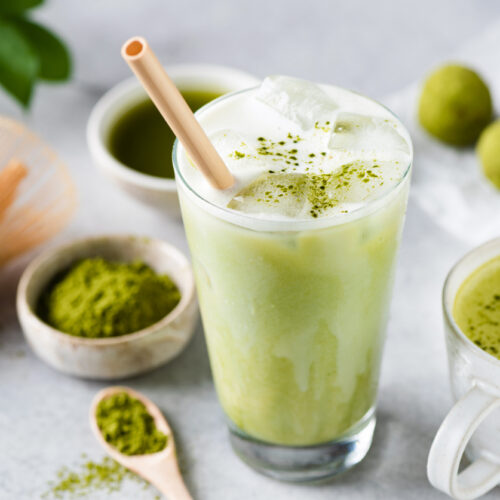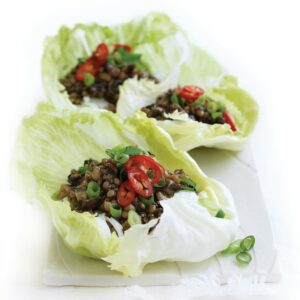
If you often experience abdominal discomfort after a meal, you may suspect you’re reacting to gluten — a protein found in bread, pasta and cereals. However, the latest science suggests something else may be at play.
The afternoon rolls around and you notice your pants are tighter around your belly — this morning they fit perfectly. Soon after, you get stomach cramps and start wondering if the toast you had for breakfast or the pasta you ate at lunch is causing all this discomfort. You suspect you’re reacting to gluten, but before you banish it from your diet forever, it‘s important to understand the other possible causes.
Gluten is a sticky protein found in wheat and some other grains, such as rye and barley. It’s gained quite a name for itself in recent years — and not always a good one.
While an increasing number of adults follow a strict gluten-free diet, even more take steps to avoid it. For some, this is based on the belief that going gluten free is healthier or helps with weight loss. But others avoid gluten in pursuit of a life free of gastrointestinal discomfort, such as bloating and cramping, as well as other symptoms commonly linked to gluten.
If you’re one of these people, it’s important to understand that not all gluten-related symptoms are caused by the same thing. This starts with knowing the difference between coeliac disease (when your immune system reacts abnormally to gluten) and what’s often called gluten intolerance or gluten sensitivity, also known as ‘non-coeliac gluten sensitivity’.
What is coeliac disease?
According to blood testing this autoimmune disease affects about 1.4 per cent of people, globally. The immune system of people with coeliac disease reacts abnormally to gluten, causing damage to the small intestine. The villi — the tiny, finger-like projections that line the bowel — become inflamed and flattened, which reduces the overall surface area of the bowel available for nutrient absorption. This is what leads to the typical symptoms of coeliac disease.
While recent research offers hope that new treatments for coeliac disease may be on the horizon, including those that increase immune tolerance for gluten, at the moment a strict and lifelong, gluten-free diet is the only recognised medical treatment for the disease. As well as minimising symptoms, sticking to this diet is vital for reducing both bowel damage and the risk of a long list of health conditions associated with coeliac disease.
What is non-coeliac gluten sensitivity?
In simple terms, it’s a condition where people who don’t have coeliac disease have gastrointestinal and other symptoms after eating foods containing gluten. While up to 14 per cent self-report having the condition, in reality studies show it affects between 0.6 to 6 per cent of Australians.
Factoring in fructans
Recent research shows gluten might not always — or only — be the problem. “Where coeliac disease has been ruled out, but people are still experiencing debilitating symptoms, data supports the fact that people aren’t reacting to gluten in many cases,” says gastroenterologist Jason Tye-Din, head of the Coeliac Research Lab at Melbourne’s Walter and Eliza Hall Institute and a member of Coeliac Australia’s Medical Advisory Committee. “Instead, it’s often fructans, a type of carbohydrate that’s found in wheat as well as a number of other grains and foods, that triggers symptoms,” he adds.
Wheat accounts for up to 70 per cent of the fructans in the typical Western diet, but other gluten-containing grains like spelt, rye and barley also contain fructans. Surprisingly, some naturally gluten-free foods also contain fructans. These include garlic, onions, asparagus, snow peas, watermelon, plums, cashews and fennel.
“This explains why people who react to fructans feel significantly better following a gluten-free diet. But, unlike people with coeliac disease who remove gluten from their diet, often they don’t feel 100 per cent better,” adds Dr Tye-Din.
Another wheat-based protein, amylase trypsin inhibitors (ATIs), can also cause symptoms. As a result, Dr Tye-Din says a more accurate term for the condition is non-coeliac gluten/wheat sensitivity (NCG/WS). “When it’s gluten or ATIs that trigger symptoms, we still don’t know the exact mechanics behind what’s happening in the body,” he says. But it’s a different story for fructans, thanks to research from Monash University on how a group of carbs called FODMAPs (of which fructans is one) can trigger symptoms in susceptible people when they’re fermented in the large intestine.
And for people whose symptoms are triggered by fructans, avoiding them forever is probably not necessary. “An ongoing intake of FODMAPs is desirable because they’re prebiotics,” says
Dr Tye-Din. “So, instead of being on a strict, long-term diet like the gluten-free diet people with coeliac disease have to adhere to, eventually fructans can be slowly reintroduced into the diet to see how much can be tolerated.”
Symptoms of coeliac disease vs non-coeliac gluten sensitivity
Coeliac disease and NCG/WS share some of the same symptoms, as well as having some that are unique.
Both conditions can cause:
- Gastrointestinal upset such as diarrhoea, constipation, nausea, cramping, bloating and abdominal pain
- Fatigue, weakness or lethargy
- Skin rash
- Iron deficiency or anaemia.
But coeliac disease can also cause:
- Severe or recurrent mouth ulcers
- Early onset osteoporosis
- Unexplained infertility or recurrent miscarriage.
And NCG/WS can also cause:
- Joint or muscle pain, also known as fibromyalgia
- ‘Brain fog’
- Depression or anxiety.
The pitfalls of self-diagnosis
If you suspect you’re reacting to gluten — or fructans or ATIs for that matter — it might be tempting to try a gluten-free, wheat-free or fructan-free diet and, if that makes you feel better, stick with it while considering the case closed. However, Coeliac Australia’s Health Advocacy Officer Penny Dellsperger warns against it.
“For people who have coeliac disease, getting an official diagnosis is so important,” she stresses. “Partly this is because it can help you stay motivated to eat a really strict gluten-free diet, but when you have coeliac disease you also require other ongoing health checks, including bone density tests and screening for other autoimmune diseases. Your immediate family members should be screened for coeliac disease, too.”
Another reason to get a proper diagnosis is that eliminating gluten, wheat or fructans unnecessarily isn’t good for you. “As soon as you restrict or cut out entire food groups from your diet, you risk malnutrition,” says Penny. “For example, gluten-free diets can often be lacking in whole grains and fibre, both of which are really important for good health. So if you don’t need to eliminate gluten, you shouldn’t.”
While a definitive test for NCG/WS doesn’t exist at present — so finding the likely cause of gastrointestinal discomfort involves an elimination diet under the guidance of a health professional — tests for coeliac disease do exist. But they’re dependant on a normal gluten intake over a period of weeks or even months beforehand.
Dr Tye-Din’s research is focused on finding a solution to this, so coeliac disease can be diagnosed after a single, small meal of gluten. At present, if you’ve already gone gluten free, accurate testing to rule coeliac disease either in or out, which is also an important step in the diagnosis of NCG/WS, isn’t available.
Bloat-inducers
If your body is reacting to fructans avoid eating the following foods:
- Fruit such as watermelon, grapefruit, plums, nectarines, pomegranate, ripe bananas, prunes, dates and raisins
- Vegetables such as onion, garlic, leek, asparagus, beets, Brussels sprouts, fennel, savoy cabbage and snow peas
- Beans such as kidney, black, lima and mung beans.
10 things you might not know about coeliac disease
- Coeliac disease can develop at any age and affects both men and women.
- Eight out of 10 Australians who have coeliac disease remain undiagnosed.
- Everyone who develops coeliac disease is born with a genetic predisposition to the disease.
- Half the population carries one or both of the ‘coeliac disease genes’, but only one in 40 (or 2.5 per cent of them) will actually develop it.
- Environmental factors are thought to play a role in triggering coeliac disease in people who carry the relevant genes.
- People who have a first-degree relative with coeliac disease have a one in 10 chance of having it themselves.
- The genes associated with it also increase the risk of developing other immune conditions, like type 1 diabetes and autoimmune hepatitis.
- The later in life it is diagnosed, the greater chance there is of developing another autoimmune disorder.
- Between 20 and 50 per cent of people with coeliac disease are asymptomatic, which means they don’t experience any external symptoms.
- If you have the disease, the damage even a small amount of gluten can cause to your bowel occurs regardless of severity/lack of symptoms.
Article sources and references
- Biesiekierski JR & Iven J. 2015. Non-coeliac gluten sensitivity: piecing the puzzle together. United Euro Gast J. 3(2): 160-165. Accessed April 2021https://www.ncbi.nlm.nih.gov/pmc/articles/PMC4406911/
- Coeliac Australia. Symptoms. Accessed April 2021https://www.coeliac.org.au/s/coeliac-disease/symptoms
- Monash University. 2020. The FODMAP diet is everywhere, but researchers warn it’s not for weight losshttps://www.monash.edu/medicine/news/latest/2020-articles/the-fodmap-diet-is-everywhere,-but-researchers-warn-its-not-for-weight-loss
- NHMRC. 2017. Gluten for punishment: challenging non-coeliac gluten sensitivity. Accessed April 2021https://www.nhmrc.gov.au/about-us/news-centre/gluten-punishment-challenging-non-coeliac-gluten-sensitivity
- Potter M DE et al. 2020. Incidence and prevalence of self-reported non-coeliac wheat sensitivity and gluten avoidance in Australia. Med J Aust. 212(3): 126-131 https://www.mja.com.au/journal/2020/212/3/incidence-and-prevalence-self-reported-non-coeliac-wheat-sensitivity-and-gluten
- ScienceDaily. Coeliac disease. Accessed April 2021https://www.sciencedaily.com/terms/coeliac_disease.htm
www.healthyfood.com










